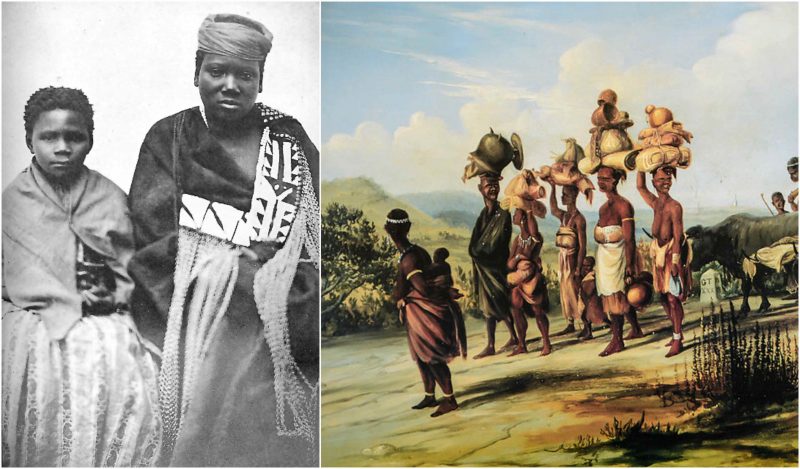Nongqawuse was the Xhosa prophetess whose prophecies led to a millennialist movement that culminated in the Xhosa cattle-killing crisis of 1856–1857, in what is now the Eastern Cape Province of the Republic of South Africa.
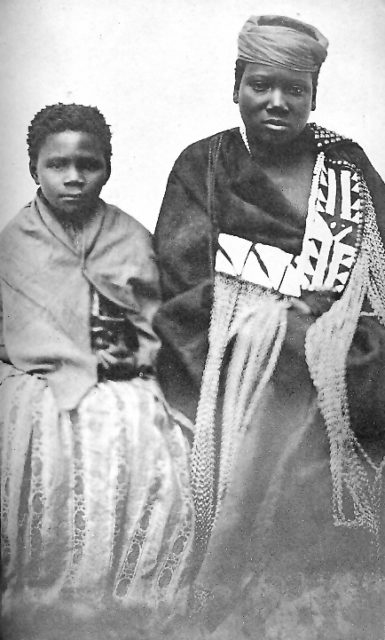
Nongqawuse, who was born in the Kentani district and raised by her uncle (Mhlakaza a famed spirit-medium) was fourteen years old when she was sitting on a rock at a pool near the Gxara River. She then saw the faces of her ancestors appearing in the pool. They told her that they would drive all the white settlers out of the country. A fierce wind would come up and blow all the settlers into the sea. But first, as an act of faith to prove their belief in the world of the spirits, the Xhosa would have to kill all their cattle and destroy all their crops.
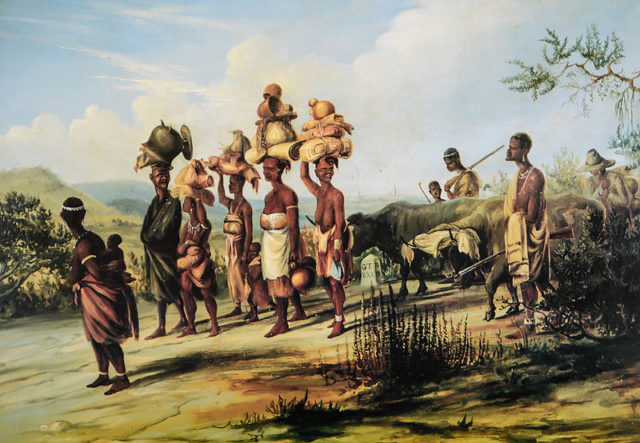
She claimed that the spirits had told her that the Xhosa people should destroy their crops and kill their cattle, the source of their wealth as well as food. In return, the spirits would sweep the British settlers into the sea. The Xhosa would be able to replenish the granaries, and fill the kraals with more beautiful and healthy cattle. During this time many Xhosa herds were plagued with “lung sickness”, possibly introduced by European cattle. By 1856, many cattle had died, and the Xhosa believed that the deaths were caused by umuthi – witchcraft.
The Xhosa paramount chief Sarhili was convinced of the truth of her prophecy and ordered his subordinate chiefs and those under British rule to slaughter their cattle.
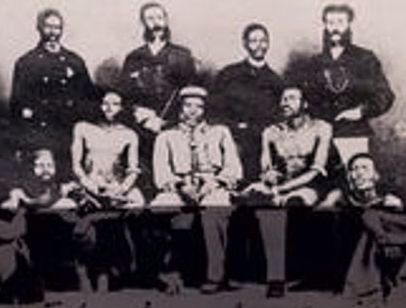
Sarhili ordered the commands of the spirits to be obeyed. At first, the Xhosa were told to destroy their fat cattle. Nongqawuse, standing in the river where the spirits had first appeared, heard unearthly noises, interpreted by her uncle as orders to kill more and more cattle. At length, the spirits commanded that not an animal of all their herds was to remain alive, and every grain of corn was to be destroyed. If that were done, on a given date, myriads of cattle more beautiful than those destroyed would issue from the earth, while vast fields of corn, ripe and ready for harvest, would spring from the earth. The dead would rise, trouble and sickness vanish, and youth and beauty come to all alike. Unbelievers and the white man would on that day perish.
Over a period of ten months, the Gcaleka and other Xhosa clans killed their livestock (it is estimated that the Gcaleka killed some 300,000 to 400,000 head of cattle) and burned their crops until they had nothing left but their family. Nongqawuse predicted that the ancestors’ promise would be fulfilled on February 18, 1857, when the sun would turn red. On that day the sun rose the same color as every other day, and the prophecy was not realized. Initially, Nongqawuse’s followers blamed those who had not obeyed her instructions, but they later turned against her.
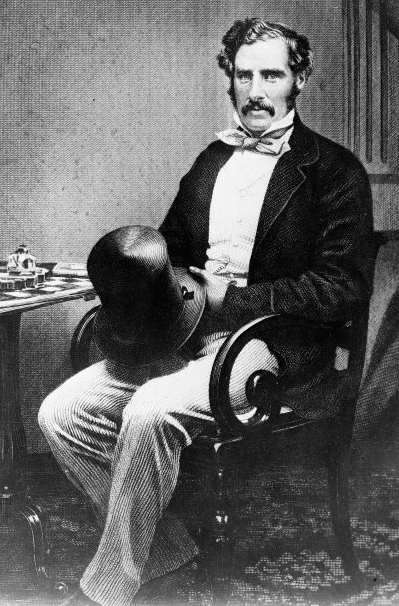
Nongqawuse was subsequently arrested by the British near the Mbashe River and imprisoned on Robben Island, near Cape Town. After several years she was returned to a farm in the district of Alexandria in the Eastern Cape. She died in 1898. Sir George Grey, the Cape Governor, used the situation to his advantage, dispossessing Sarhili and his people, and giving the land to white settlers and the Mfengu people. In their extreme famine, many of the Xhosa turned to cannibalism, and one instance of parents eating their own child is authenticated. Among the survivors was the girl Nongqawuse; however, her uncle perished.
In the aftermath of the crisis, the population of British Kaffraria dropped from 105,000 to fewer than 27,000 due to the resulting famine. Nongqawuse died in 1898.
